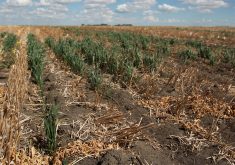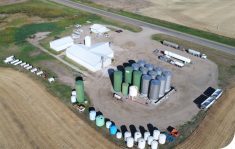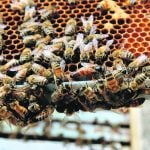Even by its own standards, Agriculture Canada last year fell short of the goals it told Parliament it would meet.
In a performance report tabled for the 2006-07 fiscal year, the department reported that most goals had been “mostly met.”
This was the department’s own judgment about a year during which farm income fell despite promises of stabilized farm income and the Farm Family Income Options program to help low income farm families was undersubscribed and much criticized.
“The reality is that the global agriculture business has changed significantly in recent years,” said the department’s annual performance review tabled in late November. “When you add that fact to the ongoing production risks for farmers, profitability for the Canadian sector remains a challenging goal.”
Read Also

Feedgrain prices expected to plummet
A massive U.S. corn crop is keeping a lid on Canadian feed barley prices.
It was a year during which the department spent below budget on files ranging from business risk management ($250 million under) to food safety and quality ($54 million under).
The department spent more than budgeted on environmental programs but underspent on innovation. It declared its environmental promises and goals fully accomplished during the year.
Overall, the department spent $3.567 billion during the fiscal year that ended March 31, 2007, the first full year of Conservative government. It had been authorized to spend $3.854 billion.
It was the first departmental performance review filed under the authority of new agriculture minister Gerry Ritz and new deputy minister Yaprak Baltacioglu, although the minister throughout the year was Chuck Strahl.
Ritz said in the report that he will run the department in collaboration with provinces, industry and consumers, but farmer interests come first.
“Every step we take, whether it is developing a policy or a program, we must ask ourselves ‘how will this help move farmers and indeed the whole value chain forward?’ ” the minister said.
“I will also make it a priority to accent the positives of our great industry, to focus on the exciting potential for production beyond food including products such as biofuels, new pharmaceuticals and industrial materials. …. With new markets, better market access and scientific advances, I am optimistic that the sector can achieve a prosperous and profitable future.”
However, the department made clear to Parliament that predictions of prosperity are far from a sure thing.
“Despite ongoing assistance from government and the continued advances in agricultural technology and productivity, farm income in Canada has consistently declined in recent years,” said the report.
“Realized farm income fell from $3.7 billion in 2001 to a record low level of $423 million in 2003 due largely to a combination of short-term production risks such as animal diseases and natural disasters. It has since recovered somewhat, reaching a high of $1.7 billion in 2006.”
However, even as the report was being presented, the Canadian livestock sector was reporting record losses that likely will depress 2007 farm income calculations when the department reports again next year.
















